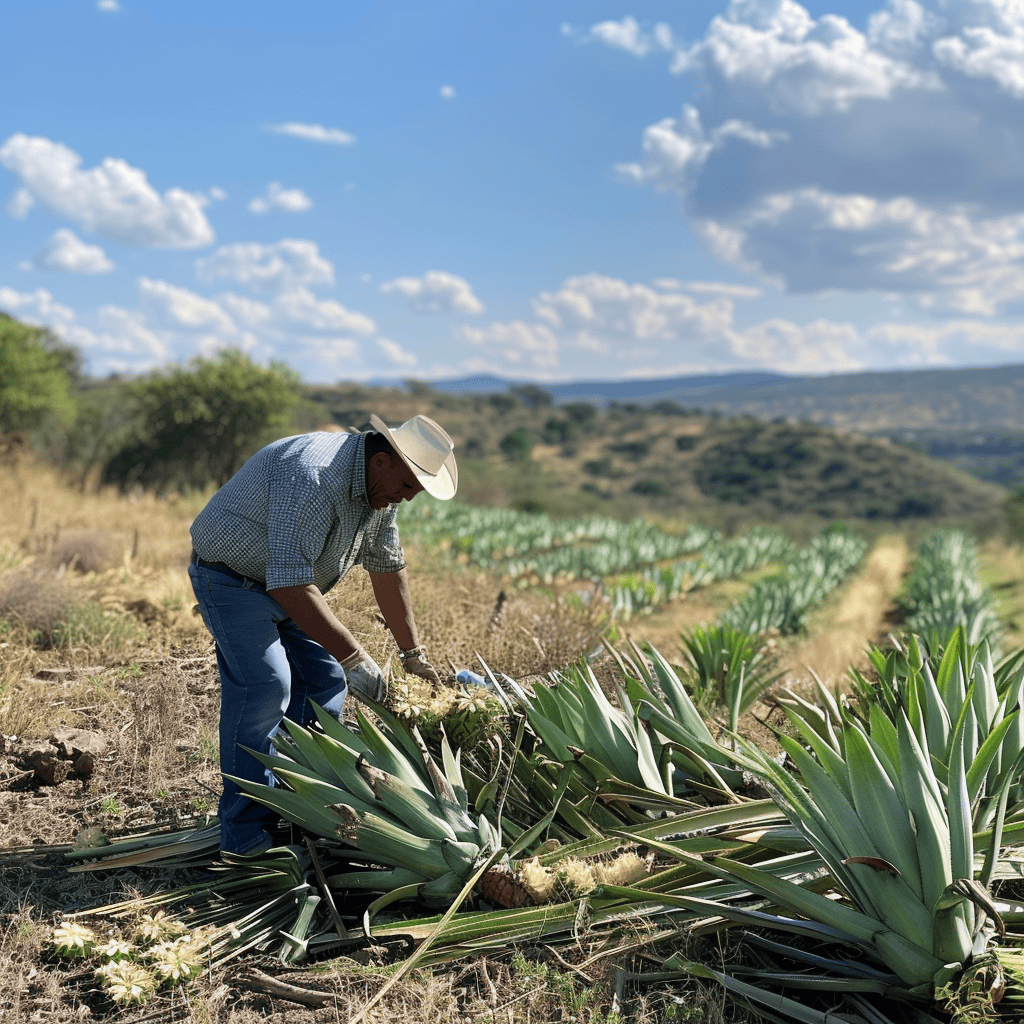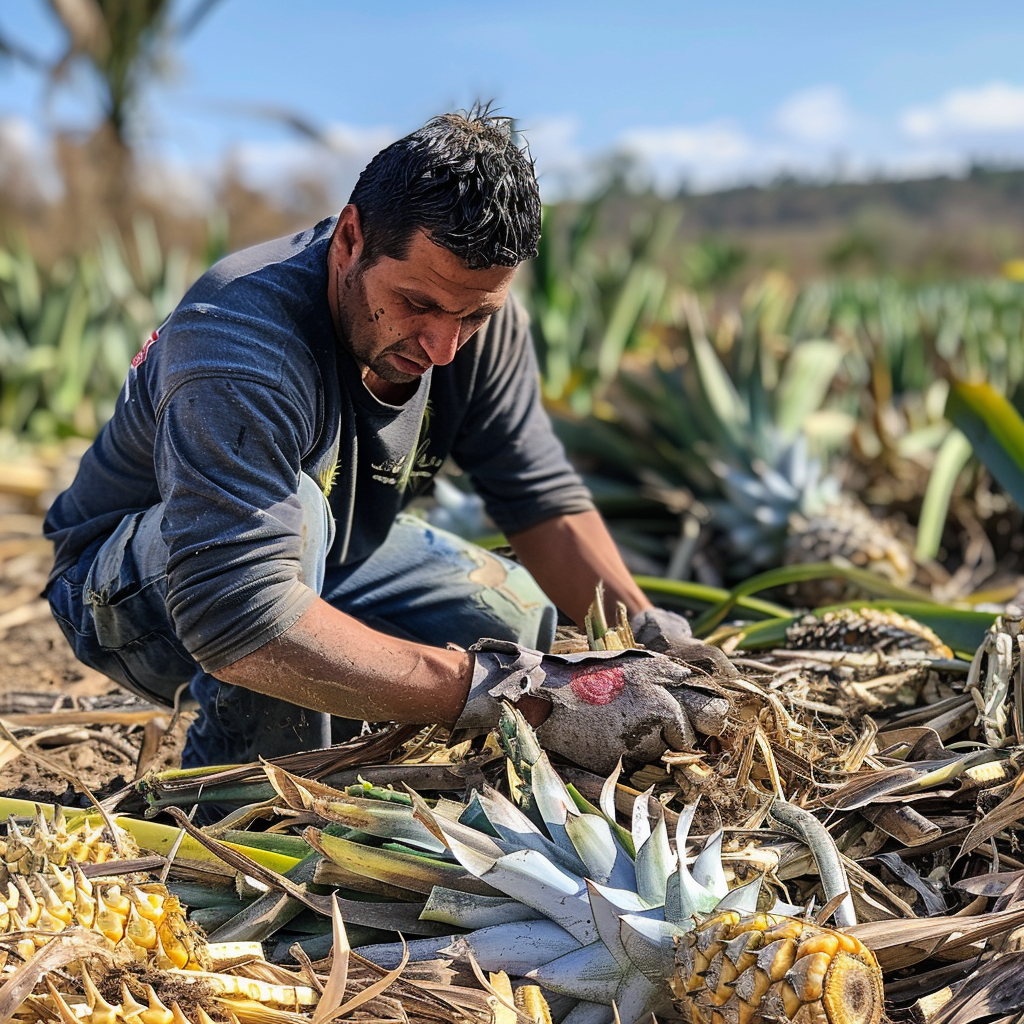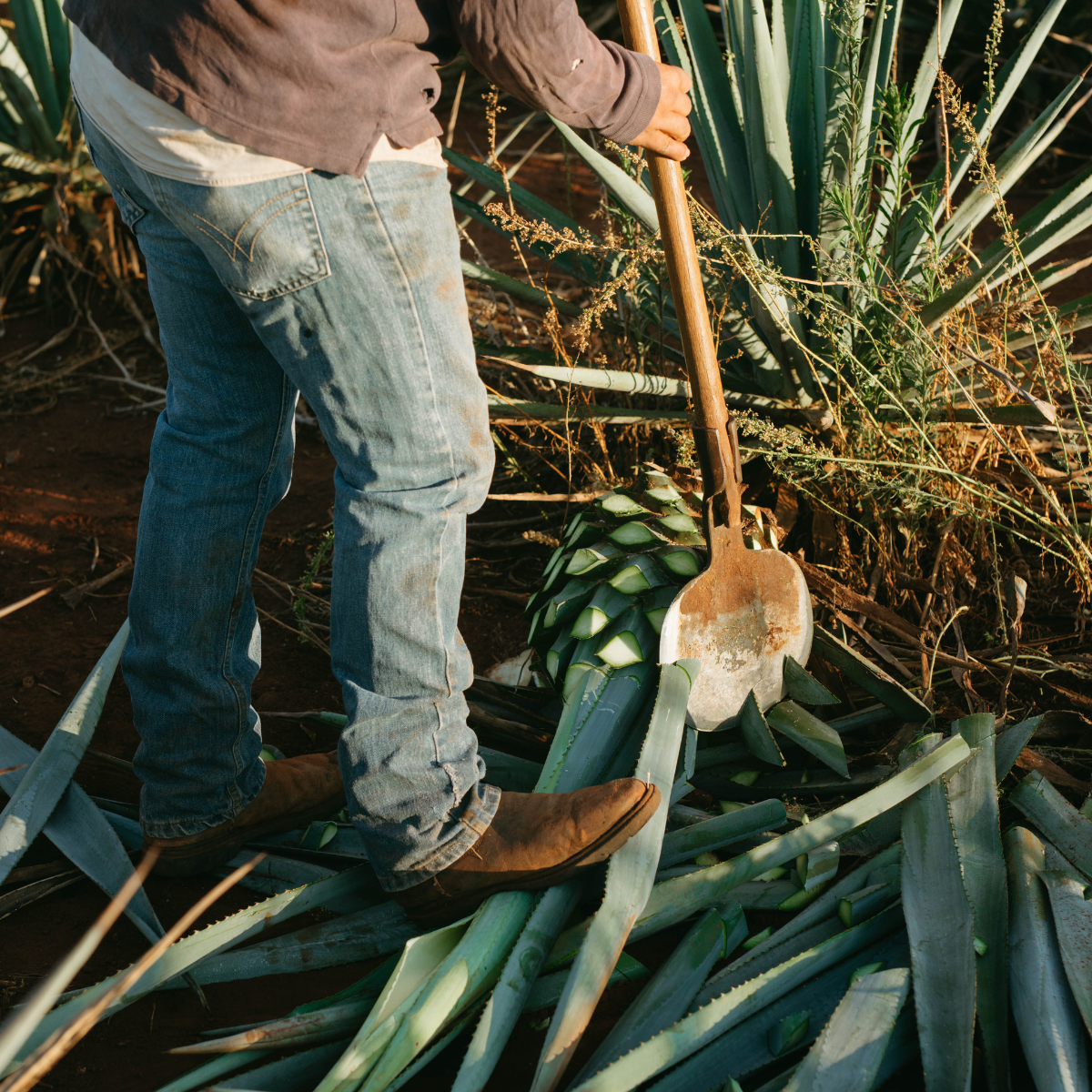Agave Harvesting
Harvesting agave is a crucial step in mezcal production, requiring meticulous selection and precise techniques to ensure the highest quality spirit. This process involves selecting mature agave plants, skillfully removing their leaves, and preparing the hearts, or piñas, for subsequent stages of production.

Selecting the Right Agave
The journey begins with carefully selecting agave plants from valleys or mountainous regions. Factors such as sugar concentration, species, size, and yield are meticulously evaluated.
Agaves harvested for the production of mezcal may be:
- Cultivated: Agaves grown under human supervision.
- Semi-cultivated: Domesticated agaves that grow in the wild.
- Wild: Agaves thriving without human intervention.
Selecting agaves from the same terroir is essential to maintain consistency in flavor and aroma, capturing the region’s unique essence. This practice mirrors the importance of grape selection in winemaking, where terroir significantly influences the final product.
Importance of Timing
Timing in the harvest process is critical. Harvesting too early can result in insufficient sugar levels, leading to a subpar fermentation process. Conversely, harvesting too late may cause the agave to divert its sugars towards flowering, diminishing the quality of the piña. Mezcaleros rely on their extensive knowledge and experience to make these determinations, ensuring that only the best agaves are selected for mezcal production.
Assessing Maturity and Sugar Content
Determining the optimal harvest time is vital. Mezcaleros, or master mezcal makers, assess sugar levels by examining:
- Physical Characteristics: An agave plant’s physical characteristics, particularly its size, color, and thickness of leaves and stems, can provide essential insights into its overall health and maturity.
- Central Core Indicators: In agaves, looking for specific indicators is vital in determining the right time for harvest. One of the most telling signs is the presence of a small cavity, referred to as the “guía,” within the central core. This cavity suggests that the plant has reached an optimal state of maturity, meaning it is ready for harvesting. As the plant approaches this stage, the size and firmness of the central core can also change, often becoming more pronounced and easier to identify.
A preferred choice among mezcaleros is the use of “Capon” agaves, which have undergone castration by removing the flower stalk and left to mature for an additional 3 to 6 months. This practice prevents the plant from expending energy on reproduction, allowing sugars to accumulate in the stalk and enhancing the quality of the mezcal.
Steps in the Jima Process
- Removal of Pencas (Leaves): Using the coa de jima, the jimador trims the long, spiky leaves of the agave, exposing the central heart, known as the piña. This step is crucial to eliminate parts of the plant that could introduce unwanted flavors into the mezcal.
- Harvesting the Piña: Once the leaves are removed, the piña is extracted from the ground. Depending on the agave species and size, piñas can weigh anywhere from 20 to over 100 kilograms.
- Transport: The harvested piñas are then transported to the palenque, the traditional mezcal distillery, undergoing further processing.

Significance of Agave Harvesting in Mezcal Production
Harvesting and jima are foundational to mezcal production. The quality of the piñas directly influences the flavor profile of the mezcal. Traditional methods passed down through generations, combined with the unique characteristics of each agave species, contribute to the rich diversity of mezcal varieties available today.
Understanding the intricacies of agave harvesting and jima offers a deeper appreciation for the craftsmanship involved in creating mezcal. Each bottle encapsulates the dedication, skill, and cultural heritage of the mezcaleros, making every sip a journey into the heart of this ancient Mexican tradition.
Honoring the Jima
The jima process is a fundamental component of mezcal production, demanding a blend of skill, precise timing, and an intimate knowledge of the agave plant. Each step in the jima process is crucial in crafting the rich, complex flavors that characterize mezcal. It begins with carefully selecting the right agave species and ensuring they are harvested at peak maturity.
Emphasizing sustainable harvesting methods enhances the final product’s quality and underscores the importance of environmental stewardship. As the global appreciation for this traditional Mexican spirit continues to expand, it becomes increasingly vital to safeguard the artisanal techniques and ecological practices that underpin its production, ensuring that future generations can enjoy mezcal’s unique heritage and flavor. The continued promotion of these methods can lead to greater recognition and support for the communities that have preserved this rich cultural tradition.

Sustainability Considerations
With the growing global demand for mezcal, sustainable harvesting practices have become increasingly important. Overharvesting, especially of wild agave species, can lead to ecological imbalances and threaten biodiversity.
Many mezcal producers are now implementing sustainable practices, such as:
- Cultivation of Wild Species: Producers help preserve natural populations and maintain ecological balance by cultivating traditionally wild agave species.
- Reforestation Efforts: Planting new agave plants to replace harvested ones ensures the long-term viability of mezcal production and supports environmental health.
- Education and Training: Providing training for jimadores and producers on sustainable practices promotes responsible harvesting and production methods.